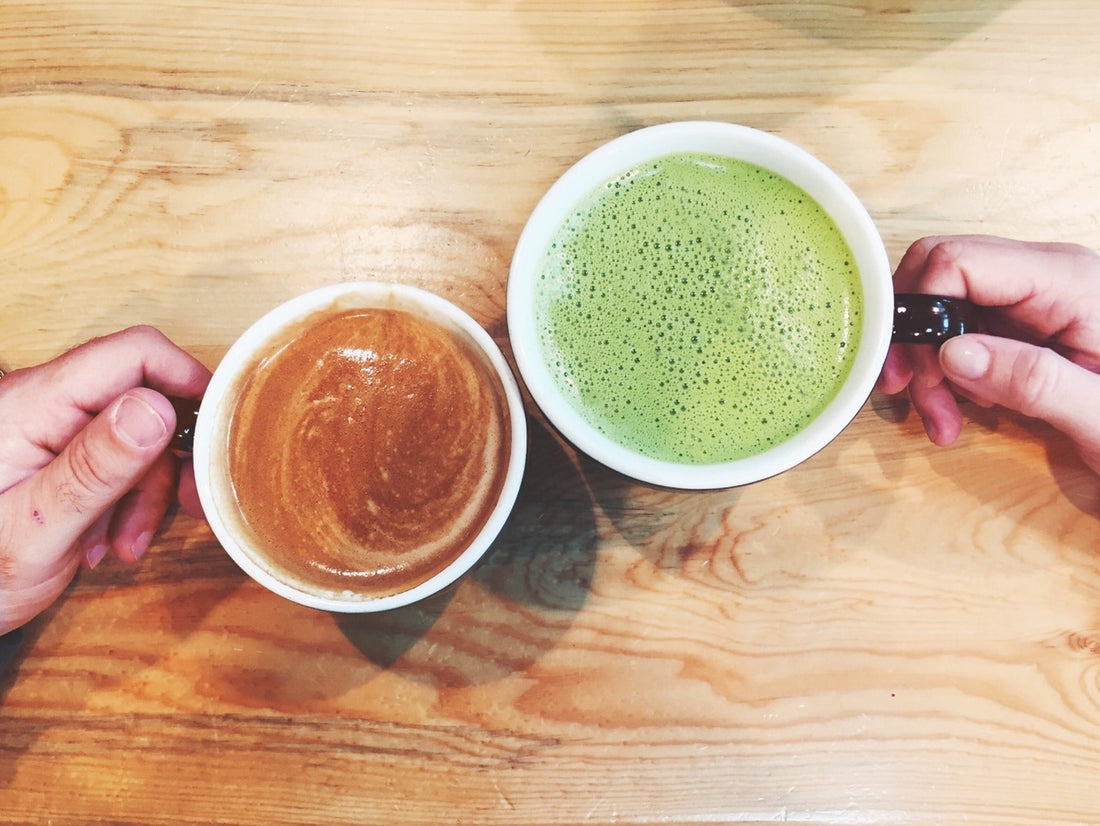
Carbon Emissions – Coffee vs Matcha
Share
Those trying to be environmentally conscious often think of reducing their carbon footprint by cycling instead of driving or recycling as much as possible. What they probably don’t think about is their daily cup of coffee.
According to the data, your daily cup of joe could add up in the long run, especially if you’re buying coffee from unsustainable sources.
On the other hand, matcha tea has shorter harvest seasons and is not mass-produced; therefore, is unlikely to generate the same amount of GHG emissions as coffee. Plus, authentic matcha is only produced in selected regions in Japan, like Uji, Kagoshima and Nishio. The tea leaves are also hand-picked instead of using machinery, which severely reduces electricity consumption.
Coffee is among the most traded commodities in the world, after oil. Over 9.5 billion kilograms of coffee is produced around the globe annually. By 2050, global coffee production is expected to triple in production—adding more risk to deforestation around tropical regions where coffee beans are produced.
By contrast, in 2021, the domestic production volume of green tea was 78 million kilograms- including loose-leaf tea leaves and matcha combined. That means coffee production surpasses matcha by about 122x.
How much Carbon Emissions does Coffee Omit?

When coffee is produced using the least sustainable methods, it generates about as much carbon dioxide as cow’s cheese. Using conventional production methods, every kilogram of Arabian coffee beans produces around 15.33 kg of carbon when transported to the UK.
Fortunately, opting to grow and transport coffee beans using sustainable means can reduce carbon emissions by 77%. This can look like using less fertilizer, water and energy management and exporting beans via cargo instead of by plane.
A cup of coffee is equivalent to approximately 0.28kg of carbon. In contrast, this number drops to 0.06kg of carbon if using sustainably grown beans. Adding dairy milk to coffee or espresso bulks the carbon emission up to 0.55kg/per cup for unsustainable beans. Using non-dairy milk alternatives is one way to make sure white coffee is greener.
Is Matcha Lighter on the Environment?

Compared to coffee, matcha has a lower carbon footprint, primarily because its production uses less water than coffee. Around 8,856 litres of water are required to produce one kilogram of green tea, whereas almost 19,000 litres are required for the same amount of coffee. Regarding carbon emissions, 1 kilogram of green tea produces 1.9 kilograms of CO2. By comparison, the same weight in coffee produces 15.3 kilograms of Co2.
Both tea and coffee play essential roles in providing substance and improving food security in developing countries. However, coffee is also notorious for raising human rights concerns, hence, the rising popularity of ethical and sustainable coffee beans.
Sustainability: Coffee vs Matcha
There are concerns that coffee will become harder and harder to source sustainably in the next few decades. It may even become a luxury item!
By 2100, it is estimated that 50% of the land used to grow coffee will no longer be arable. Various factors, including higher temperatures and shifting rainfall patterns, will make the land where coffee is grown unsuitable for production. By 2020, Ethiopia, the sixth largest producer in the world, is estimated to lose over 60% of its production. As climate change escalates, coffee farmers will face bigger challenges with pest management and disease control. This can lead to many migrations to safer industries due to the rising costs of protecting coffee crops. As a result, we could witness shorter coffee supply chains and diminished quality.

Meanwhile, a typical green tea plant has a life span of half a century. There are only a few harvests per year, making it a pretty sustainable crop. There is little known damage to soil, surrounding lands, waters, animals, or air when matcha is grown in Japan. Matcha is exceptionally sustainable because it utilizes the whole leaf in production, not leaving any waste (other than trimming the tea stems).
Conclusion
Matcha is not only a delicious, antioxidant-rich addition to your routine, but it’s greener than your usual cup of coffee. Less is more with matcha, and you only need about a teaspoon and less than 250ml of hot water to make your perfect, frothy matcha drink—no tea bags, filters, or waste to throw out, either. Try starting your matcha ritual today with a reliable, smooth-drinking Ceremonial grade matcha, also known as everyday matcha.